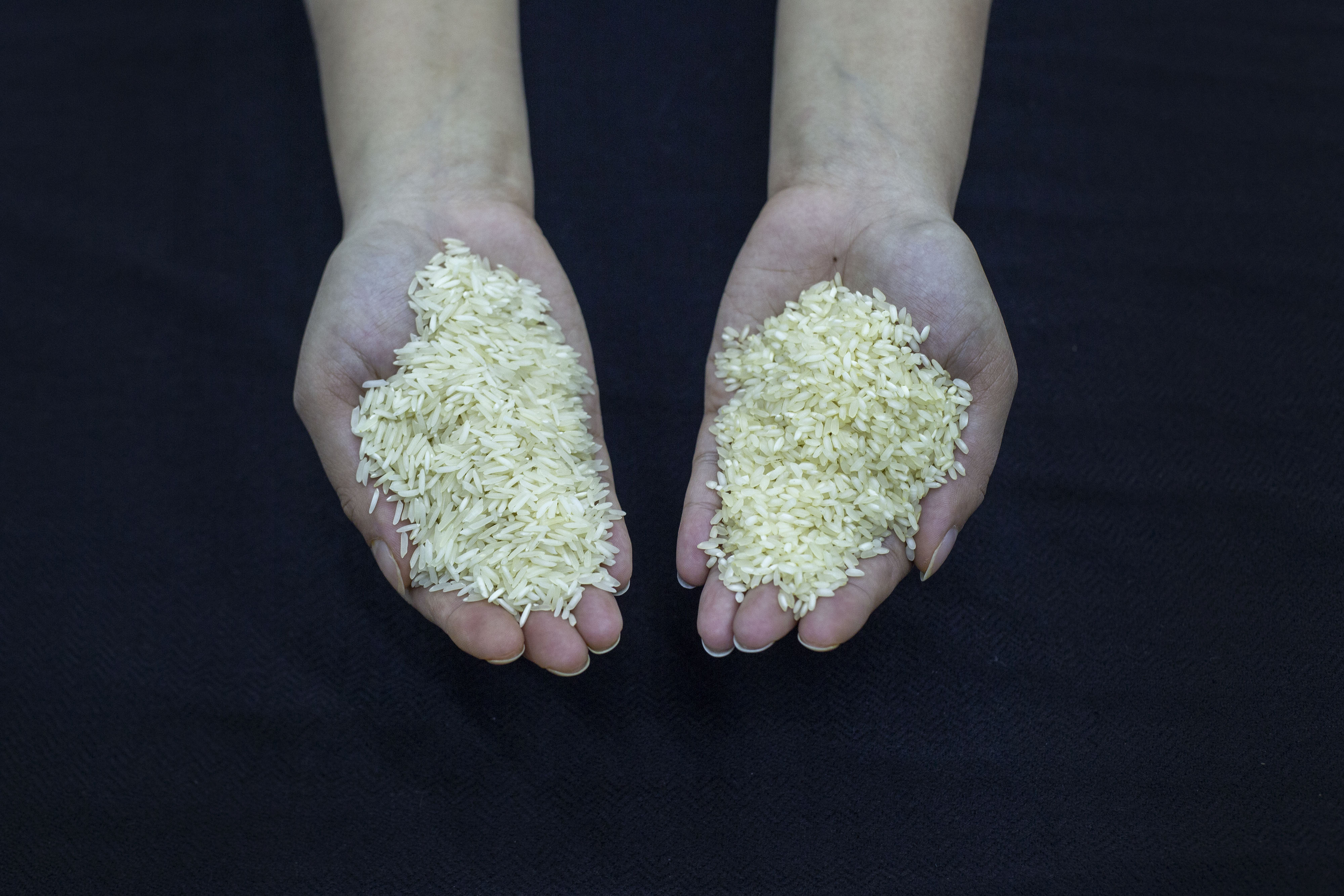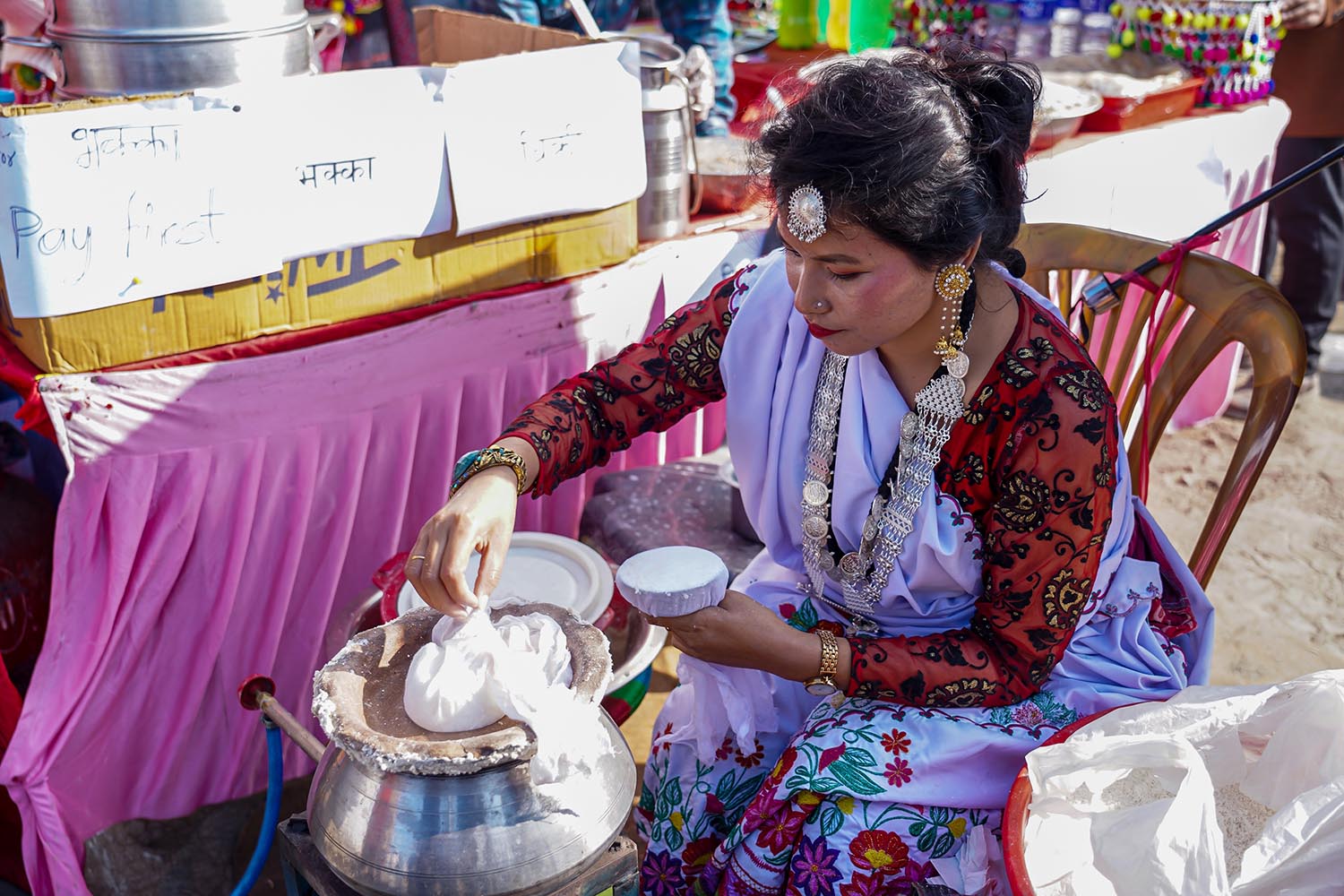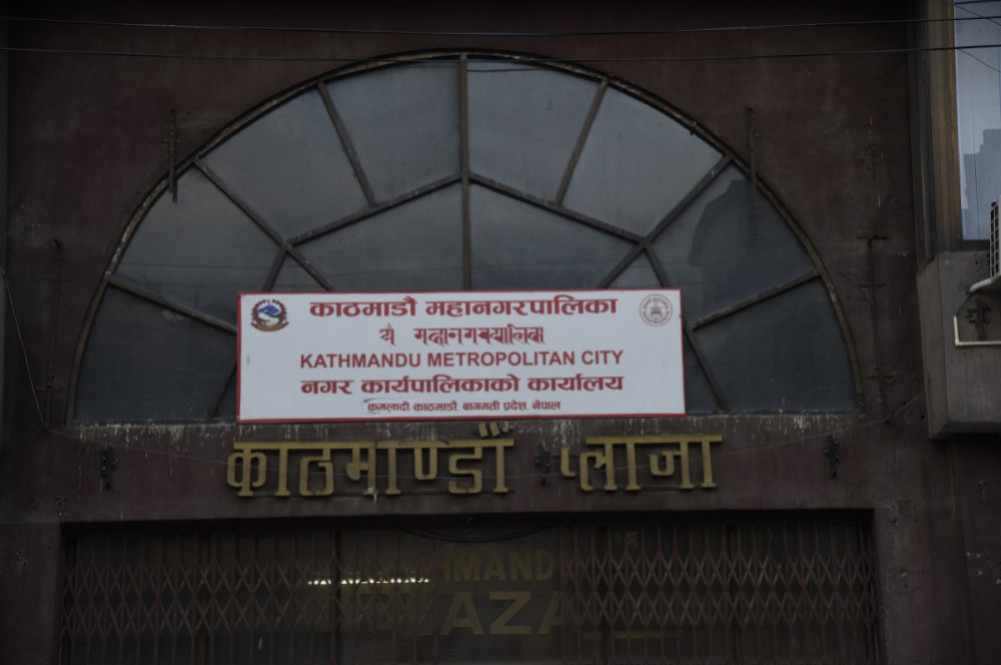Food
How rice became a staple in the hills and mountains—and why that’s unsustainable
Nepal’s reliance on rice over traditional nutrient-rich grains is costing the country billions every year, and making people unhealthier
Tsering Ngodup Lama
Until a decade ago, in the remote village of Lo Manthang in Upper Mustang, the village fields would be lush with barley and wheat in the months of July and August. Red flowers of buckwheat would blossom and blanket large swaths of fields.
The three grains were the village’s staple: from barley, people made tsampa, usually eaten for breakfast. For lunch and dinner, it was usually dhindo or roti made out of buckwheat or wheat.
“It used to be a beautiful sight,” says Indra Dhara Bista, a 49-year old resident from the village. “The entire village used to eat these grains.”
But not anymore. Today, the same fields, once luxuriant with local crops, are now mostly barren—and the villagers’ diet has been replaced by rice.
“As a child, I remember eating rice only during Lhosar, our most important festival,” Bista says. “Today, the majority of the villagers eat rice.”
It is not just the residents of Lo Manthang for whom rice has become the new staple food. Over the last 20 years, rice—white rice in particular—has increasingly become the entire country’s dominant grain, eclipsing all other major crops, both in production and consumption. This dependence on rice has been particularly alarming for the country’s mid and upper hilly and mountainous regions, where rice doesn’t grow, or even if it does, grows in limited quantities. As a result, local residents in these parts of the country are increasingly reliant on a staple food that is not native to their region.
But how and why did rice become a staple in regions where people have thrived on local grains for centuries, and what does it mean for the country?
Dal-bhat power, 24-hour
In Nepal, rice has always been more than just a grain—it is an indicator of social status.
“Rice was the most expensive of all grains, and in places like Kathmandu, it was the prefered choice of grain for the ruling class of Ranas and Thakuris,” says Yogendra Kumar Karki, Joint Secretary at the Ministry of Agricultural Development. “In the villages, the only people who could afford rice were village heads and landowners. That’s how this whole notion of rice as a ‘superior’ grain got ingrained in our society, and it became a grain that everybody aspired to eat but only a select few could afford to.”
“As much of the population in the hills and mountains is economically backward, rice was out of their reach. And rice consumption was concentrated mainly in the Terai region, where it grew in plenty, and in the then urban areas like Kathmandu,” says Karki. Grains like buckwheat, millet, barley, etc., that were consumed daily by the majority of the population, were considered inferior.
Up until the 80s, the domestic demand for rice was so low that the majority of rice produced in Nepal was exported. In fact, rice was the country’s largest agricultural export. But from the mid-90s through the early 2000s, the demand for rice began to soar. From the mid-2000s, demand ballooned.
 For Madan Rai, a development activist, this surge in the demand for rice is intricately linked with the rise of foreign employment and increasing road access (see graph).
For Madan Rai, a development activist, this surge in the demand for rice is intricately linked with the rise of foreign employment and increasing road access (see graph).
“The money that Nepali workers sent home to their families provided many with a steady income, increasing people’s purchasing power. The country’s road network too was expanding, reaching hills and mountains, which made it possible for rice traders to transport rice to villages in the hills and mountains,” says Rai. “So many people started buying rice, the superior grain, and made it a part of their diet. This goes on to show how deeply ingrained this whole feudal mindset is in our country.”
But it is not just an ingrained feudal culture that has led to an unhealthy dependence on rice--the Nepal government and aid agencies have also played major roles, especially in the far west regions like Karnali.
“The government, at the beginning of the Panchayat, started airlifting rice to Karnali to tackle ‘food scarcity’. The truth is, people in the Karnali region have survived on local grains for centuries, and the region never reeled under food scarcity,” says Rai. “What the government called food scarcity was actually rice scarcity.”
Activists like Rai point to a vicious cycle of dependence where many farmers stopped growing local grains after receiving subsidised rice from the Nepal Food Corporation and the World Food Programme (WFP), leading to more ‘scarcities’.
From 1996 to 2010, WFP implemented ‘Food for Work’ programmes in seven districts in the country’s far west and five districts in the midwest. Under the programme, workers were paid in rice. From 2006 to 2012, WFP airlifted mass quantities of rice to ‘drought-affected’ regions, but this only further aggravated the situation.
“If you go to the hills and mountainous regions of the country, you will see tracts of land that once used to be arable, where local grains were grown,” says Rai. “They are now barren or overgrown with vegetation. Many farmers have stopped growing local grains altogether or have significantly reduced production.”
Paying a high price
This wholesale shift towards rice in the hills and mountains is costing the government millions every year. The Nepal Food Corporation (NFC) -- the government organisation tasked with sending and distributing rice to remote districts in the country -- has already sent 15,239 metric tonnes of rice to different parts of the country, so far this fiscal year. This cost the government Rs 440 million in transportation alone -- out of which, Rs 174.52 million, nearly 40 percent of the total, was spent on Humla. The district, which has a population of just 50,858 people according to the 2011 census, received 1,540 metric tonnes of rice, which comes down to 30.4 kgs of rice per person. According to government data, the average rice consumption in the country is 87.75 kgs per capita.
The rice that’s transported to Humla is not enough for the people there, as whatever little rice the district gets is not equally distributed. “People with connections end up withdrawing quintals of rice,” says Rajesh Rokaya, a local from Simikot, Humla. In a remote region like Humla, a 30kg sack of rice costs Rs 1,800 at the NFC depot; the same sack costs Rs 5,000 at non-governmental outlets. “The difference is a lot of money in a region where jobs are scarce and the cash economy is next to non-existent. Stories of people selling household items, barley meant for their mules, to buy rice are common,” says Rokaya.
In Humla’s neighbouring district of Dolpa, the government has already spent Rs 46.49 million to transport 1,200 metric tonnes of rice this fiscal year. Dolpa has a population of just 36,700, according to 2011 statistics, which, again, is 32.69 kgs of rice per person.
“This is an unwise use of government funds. For example, in Humla, had the government spent just Rs 100 million on programmes and subsidies targeted to increasing the productivity of highly nutritious local grains like buckwheat, foxtail millet, marsi, and local beans that grow in plenty in Humla--and on awareness campaigns on the health benefits of consuming these local grains--the impact would’ve been more far-reaching and better than its short-term and expensive airlifting programmes,” says Rai.
On the national level, the government’s approach to solving the country’s ballooning rice demand has been one dimensional--to increase rice production. Even though the country’s overall production has increased, the growth has been negligible -- from 4.29 million metric tonnes in the 2007/08 fiscal year to 5.15 million metric tonnes in 2017/18.
During this period, Nepal’s rice import increased. According to the Nepal Rastra Bank, Nepal imported rice worth Rs 28.91 billion from India in the 2017/18 fiscal year, stretching the country’s already widening trade deficit.
“For too long the Government of Nepal believed that the solution to the growing rice demand was to increase rice production. But we have realised that we need to take a different approach,” says Karki. “We are now encouraging growth and the consumption of local grains, along with programmes to spread awareness about the nutritional value of these grains and promoting recipes for different dishes that could be prepared.”
Agriculture experts affirm the government’s new stance but say it has been late in coming. “If only our ministry officials actually went to the villages, observed and researched their field of work,” says Rai.
Nutritionally low
Not only is Nepal’s rice dependency widening our trade deficit and forcing people in the remote regions of the country to depend on an unsustainable grain, it is also contributing to a poorer diet.
Compared with traditionally-consumed grains like buckwheat, millet and barley, rice has the least amount of nutrients. Millet is a great source of iron and magnesium, and is packed with B vitamins and a host of other nutrients that are known to improve heart health by reducing blood pressure. Barley is an excellent source of fiber, which helps in lowering blood cholesterol. Buckwheat, another widely consumed grain, has high amounts of magnesium and niacin, a B vitamin. The grain is also widely known to keep Type 2 diabetes in check and is good for the heart.

Rice, on the other hand, has a high glycemic index (GI) of 73. Foods with high GI spike blood sugar levels, and regular consumption of high GI foods increase the risk of Type 2 diabetes. According to a 2016 World Health Organisation report, the top three countries in the world with diabetes are Indonesia, China and India. These three countries are the world’s largest consumers of rice.
“Unlike twenty years ago, our lifestyle has gotten very sedentary and to consume the amount of rice that we Nepalis do is to expose oneself to a range of non-communicable diseases,” says Dr Aruna Uprety, a public health specialist. “Rice dependency among people from the hills and mountains is actually nonsensical when you have all these local grains that are packed with micro and macro nutrients, making them a much healthier alternative.”
A long-grain fascination
Eating rice alone hasn’t been enough -- it is long-grain, basmati rice that’s now the prefered choice of the upper and middle class. “Consuming long-grain rice is the country’s new social indicator,” says Rai.
The problem with our fascination with long-grain rice is that Nepal produces only negligible amounts of long-grain rice, and that is forcing the country to rely heavily on imports to meet local demands. According to a data provided by the International Rice Research Institute-Nepal (IRRI-Nepal), the country imported 600,000 tonnes of rice in 2017. As per data from the Ministry of Agricultural Development (MoAD), rice consumption per capita was recorded at 87.75 kg in 2011-13. That means, the amount of rice imported by Nepal in 2017 was enough to feed just 20.2 percent of the current population of Nepal. Agriculture experts say that the majority of our rice import is fine aromatic/long grain rice. With the burgeoning middle class, this demand is bound to increase, forcing the country to import more, adding to a massively lopsided trade deficit.
Long grain rice has lower yield than short- and medium-grain rice and this is the prime reason why Nepali rice farmers prefer to not grow it. Another reason that’s keeping Nepali farmers from growing long-grain rice is competition from India, where agriculture is heavily subsidised.
“For local rice traders, it’s cheaper to import long-grain rice from India than to buy it here,”says the MoAD’s Karki. “Seeing the growing demand in long-grain rice, the government, in collaboration with IRRI-Nepal, has started growing improved variety of long-grain rice in Tarai. The challenge now is to keep the price of the local long-grain rice at par with Indian counterparts.”
Nepal’s current rice dependency started due to centuries-old socio-cultural notions surrounding rice, and this dependence has been costing the country billions in imports, threatening the country’s food security and risking people’s health.
In villages of Humla, Dolpa and Mustang, this dependence on rice has trapped people in a cycle of dependence with a non-native grain and has marginalised other local grains.
In an email response to The Post, WFP -- which itself has airlifted tonnes of rice to these very districts over the years -- admitted that rice dependence is very high “in general” in the hilly regions of the country, and that high consumption of rice was preventing the diversification of diets. The organisation’s Mother Child Health and Nutrition Programme is now working to train and education people on the importance of diversifying diets.
“To overturn centuries of thinking hinged upon rice as a ‘supreme’ grain is a difficult task,” says Madan Rai. “But we’ve got to start somewhere, and the best option that we have is to inform people that traditional grains are more nutritious, and convince people to start consuming and growing local grains all over again.”





 6.1°C Kathmandu
6.1°C Kathmandu





